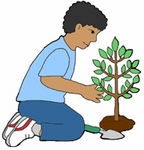
Worksheets and No Prep Teaching Resources
Reading Comprehension Worksheets
Caring for Earth

Caring for Earth
 Worksheets and No Prep Teaching Resources Reading Comprehension Worksheets Caring for Earth |
 Caring for Earth |
| edHelper's suggested reading level: | grades 4 to 6 | |
| Flesch-Kincaid grade level: | 7.28 |
|
Indoor Air Pollution
By Jennifer Kenny |

|
 |
Create Weekly Reading Books
Prepare for an entire week at once! |
| Leave your feedback on Indoor Air Pollution (use this link if you found an error in the story) |
 |
Caring for Earth
|
 |
Earth Day Activities, Printables, Worksheets, and Lesson Plans for Kids
|
 |
Science
|